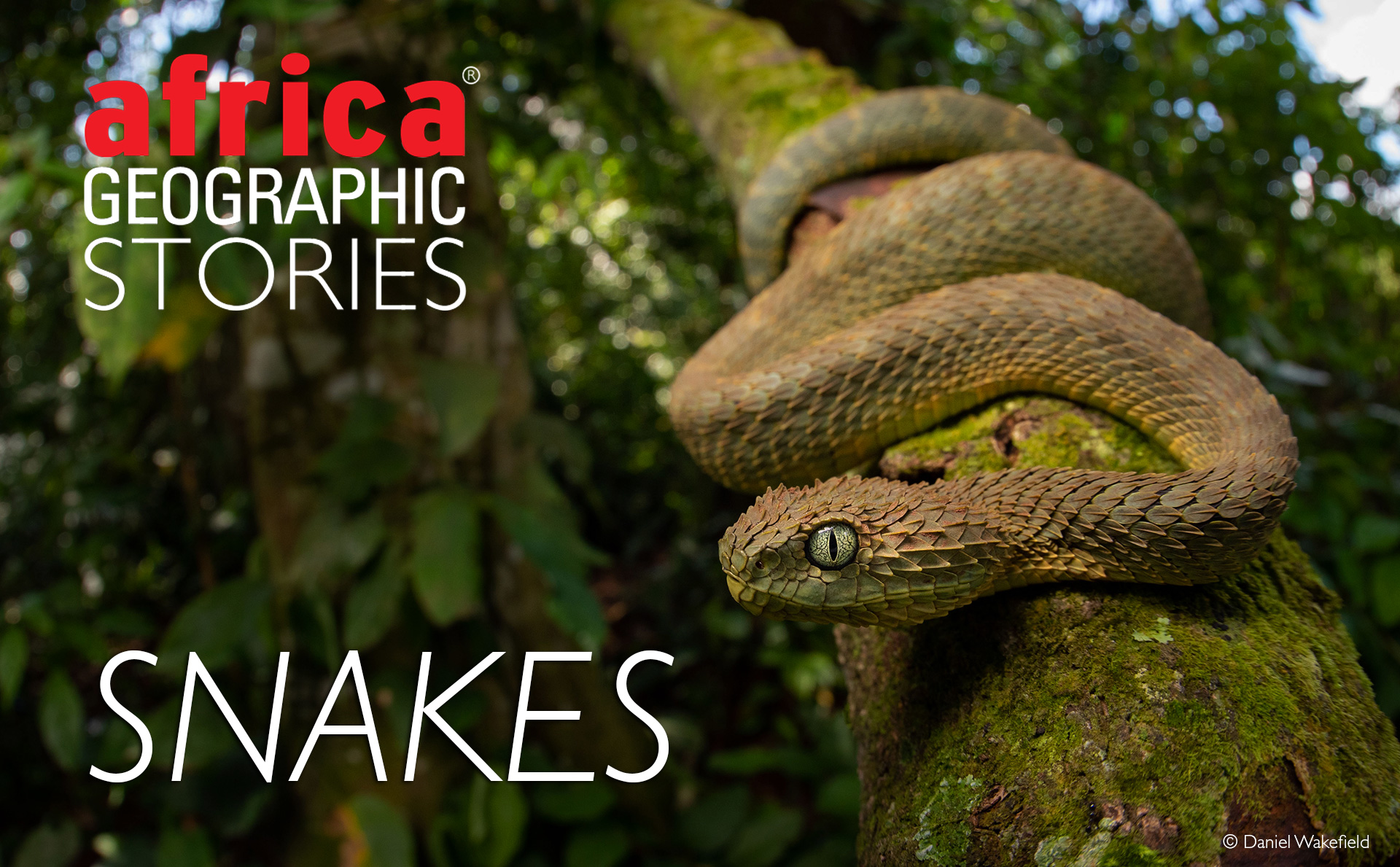
Ye olde-world reptiles


Snakes are not an animal group typically celebrated. Far too few people appreciate snakes as the marvels of natural engineering they are. Many are wary of them, while some are paralytically terrified at the thought. There is a rational aspect to this fear – certain snakes are dangerous, and a select few are potentially deadly. But like all fears directed at wildlife, it is only exacerbated by an unfortunate assembly of superstitions, misconceptions, and a fair amount of downright inaccurate information. What follows is a summary of some of the fascinating characteristics of these remarkable reptiles – to balance the scales, so to speak.
Ancient origins
Snakes are found on every continent on the globe apart from Antarctica, as well as many of the smaller islands. There are close to 4,000 recorded snake species in the world. From the worm-like threadsnakes to enormous pythons, they display an exceptional variety of colours, designs, and behaviours. Like almost all reptiles, they are ectothermic, meaning that they rely on external heat sources rather than metabolic heat to stay warm. They are also poikilotherms, so their internal body temperature (and, subsequently, activity levels) varies depending on the current ambient temperature.
The various orders of Reptilia, including crocodilians, testudines (tortoises, turtles, and terrapins), and the squamates (lizards and snakes), all have truly ancient origins. The earliest known fossils of snakes date back to the Middle Jurassic and Lower Cretaceous, roughly 170 million years ago and share many characteristics in common with their modern relatives. The consensus is that these early serpents evolved from lizards, and evidence of a once quadruped existence can be seen today in snakes such as pythons or boa constrictors, which often have vestigial rear limbs. It is, however, important not to equate primitive to crude or unsophisticated. With highly specialised fangs, complex venom proteins and a variety of other adaptions for each habitat and hunting style, snakes are highly specialised and efficient predators.

The mind of a serpent
A corollary of the belief that snakes are primitive is the impression that they are mindless biting/killing machines without much cognitive function. The idea of a “reptilian complex” or “lizard brain” arose in scientific literature in the 1950s, when Paul MacLean proposed the concept of the triune brain. In essence, his theory runs that the brains of modern mammals consist of three distinct regions, with the reptilian brain at the centre and the more highly evolved neocortex on the outside. The reptilian brain is associated with the four basic functions of life (the 4 Fs): fight, flee, feed, and fornicate. The neocortex, not present in reptile brains, is associated with higher thought, language, abstraction and perception.
However, behavioural, physiological and histological evidence is mounting that this theory is a massive oversimplification of a structure as complex as the brain. Reptiles, including snakes, likely have a far greater cognitive ability, particularly learning, than once believed.
Why is this important? Because it goes a long way to controlling the fear response to snakes. When faced with a snake, it is essential to remember that you are not interacting with some brainless, pre-programmed envenomation machine. They bite to defend themselves, and humans can communicate that attack is not eminent through body language and avoiding sudden, threatening movements. The vast majority of snakebites are handling related, so when in doubt, leave the snake alone and leave the catching to the experts.
The world through their nose
Snakes are chemosensory maestros. In other words, their sense of smell is king. This is facilitated by the nose and tongue, with chemicals processed by the olfactory epithelium and the vomeronasal organ. Their famous forked tongues are highly specialised with papillae or pits, which catch and retain chemical particles and transport them to the vomeronasal organ (the Organ of Jacobson) close to the palate. This organ makes the process of smell rather than taste, as snakes do not have tastebuds. The flicking tongue collects the chemicals, and the bifid tip is believed to play a role in helping them determine the direction of the smell.
In contrast, the eyesight of many snakes is relatively poor, though naturally, this is generalisation and species-specific. The colour and detail vision of an arboreal, diurnal species like a vine snake is far more refined than that of a burrowing species. Spitting cobras also rely on good eyesight when projecting their venom with an accuracy of over 90%. Again, understanding how a snake sees the world has implications for avoiding a dangerous encounter – by avoiding sudden jerky movements when confronted by a snake you are less likely to draw their attention (or ire).
Many snakes are sensitive to UV light, while diurnal species that hunt during the day have lenses that filter UV to improve contrast. Vipers, pythons and boas can use infrared “vision” to locate prey. Pit organs around their nostrils detect heat given off by other animals and transmit these signals to the brain to create an image of the creature in front of them.
Snakes do not have any outer or middle ear apparatuses, but, contrary to popular belief, this does not mean that they cannot hear. They do have inner ear structures capable of picking up vibrations in the ground and air, as well as some sound waves in the lower frequency ranges.
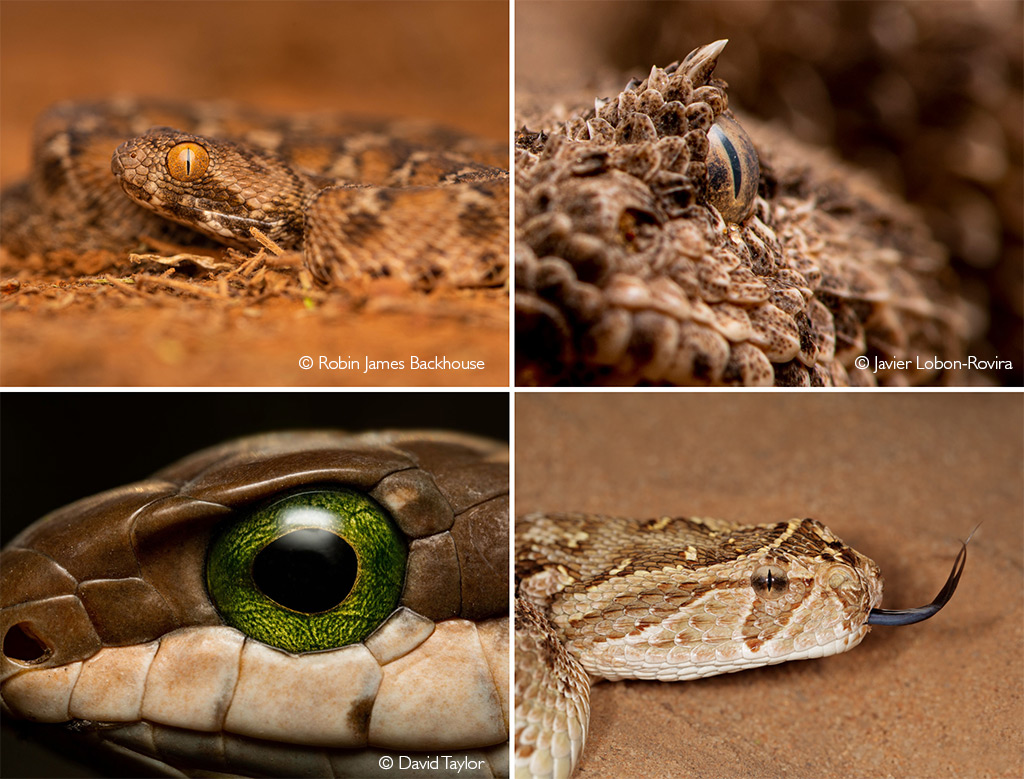

The long muscular tube
Anyone who has ever watched a snake move, climb or coil will be able to attest to their tremendous flexibility, which in turn is made possible by numerous sets of ribs that extend almost the entire length of the body. They can have anywhere between 200–400 vertebrae. Pair organs like kidneys are arranged longitudinally, and snakes have an elongated right lung that is responsible for most, if not all, ventilation. Furthermore, they are astonishingly strong.
Without limbs, their locomotion patterns can be primarily divided into four different types of movements (not counting arboreal motions, which can be a mix of all four). Though the type of habitat and hunting habits of specific snakes will determine which mode they use, most snakes use all four types of movement depending on the circumstances. Lateral undulation, or serpentine motion, is the most common and familiar mode of locomotion – creating the characteristic S-shaped curves and pushing off each side in a typical slithering manoeuvre. Other types of movement include sidewinding, concertina and rectilinear motion. Traction is aided by long rectangular ventral (belly) scales.
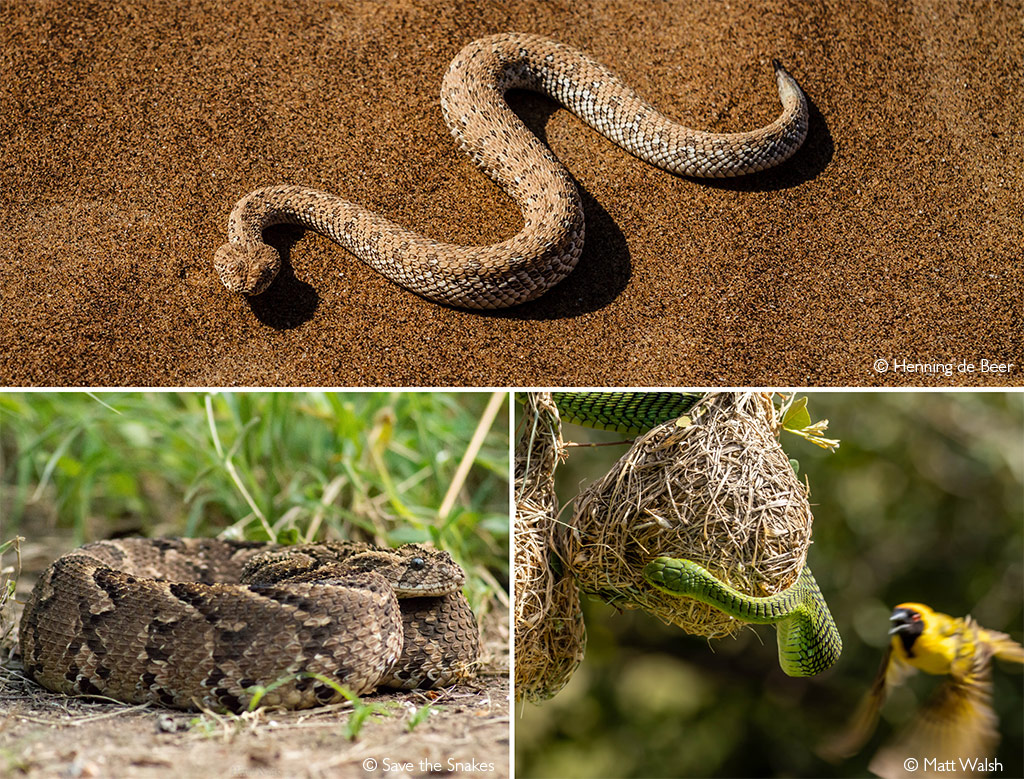
Keeping a thick skin
The skin of a snake is perhaps one of its most infamous (and possibly reviled) characteristics. Despite common misconception, their skin is not slimy but is covered in a dry layer of overlapping keratin scales. Depending on the species, they may be smooth, granular, or keeled and come in various shapes. The scales are transparent (think of a shedded snakeskin), and the pigments are found in the underlying skin. Their colours range from beautiful bright colours to the subtle but equally attractive camouflage of the ground ambush predators. Colour aside, the arrangement or pattern of scales, particularly around the face, can be used to identify specific species.
Snakes are born with a set number of scales that does not increase over their lifetime, but the scales themselves will grow over time and may even change shape. The scales are shed multiple times throughout a snake’s lifetime in a process known as ecdysis. This allows the snake to replace old and damaged skin and remove parasites. Interestingly, experts dispute that moulting or shedding in snakes is part of their growth process.
A snake shedding its skin feels particularly vulnerable, especially in the early stages when the specially designed scale over the eye (known as the eye cap) turns milky and compromises its vision. This increased fear may make a shedding snake more likely to lash out if disturbed.

Pointed fangs and potent venom
Lashing out is carried out by the business end of the snake – the part that terrifies people. The teeth of snakes differ depending on their hunting styles and venom types. The venom is produced by the modified parotid gland (a salivary gland found at the back of the jaw) and, as a general rule, can be matched to the type of fangs the snake has. Though technically modified saliva, venom contains a complex mixture of proteins with toxic and potentially lethal properties, which then immobilise and begin digesting prey. In essence, neurotoxic venom attacks the nervous system to cause pain, paralysis and respiratory distress. Cytotoxic venom works on the molecular components of cells, destroying tissues and causing intense, instant pain and often resulting in necrosis and the potential loss of body parts. Haemotoxic venom destroys red blood cells and disrupts clotting mechanisms. It may be slower acting than the other types of venom but can result in massive damage to internal organs and seldom has an effective antivenom.
Members of the Viperidae (puff adders, Gaboon vipers) and Atractaspididae (stiletto snakes) families have massive, tubular, hinged fangs that swing forwards when the snake strikes to inject (usually) cytotoxic venom. Elapids, such as cobras and mambas, have much smaller fangs and inject mostly neurotoxic venom. The orifices in the fangs of spitting cobras are precisely positioned to allow them to project their venom forward and upwards. Finally, the Colubridae (boomslangs) and Homalopsidae (a group of Indo-Australian water snakes) have grooved, backwards oriented fangs set more towards the back part of the jaw. They typically (but not always) inject hemotoxic venom, but their fangs require that the prey be shifted towards the back of the mouth.
Several snakes do not have fangs at all. Constrictors such as pythons do not rely on venom to kill their prey. Instead, they strike and rapidly envelop potential prey in their coils. The powerful snake then generates a massive pressure that essentially cuts off the blood supply to the vital organs and causes death by cardiac arrest (rather than by asphyxiation) within minutes, if not seconds. Constrictors have a full set of teeth to grab and secure their victims and can still deliver an excruciating (and septic) bite. Still, they do not envenomate, and the teeth are therefore not technically classified as fangs.
Whatever the dental set-up, snakes cannot take bites out of or chew their food, meaning that anything caught has to be swallowed whole. This is accomplished by a loose articulation (joint) between the lower mandible and the skull. They can also move their upper maxilla courtesy of a quadrate bone, a characteristic shared with other reptiles, birds, and amphibians. The two halves of each jaw bone are also only loosely held together by a flexible ligament, allowing for a much greater degree of movement.
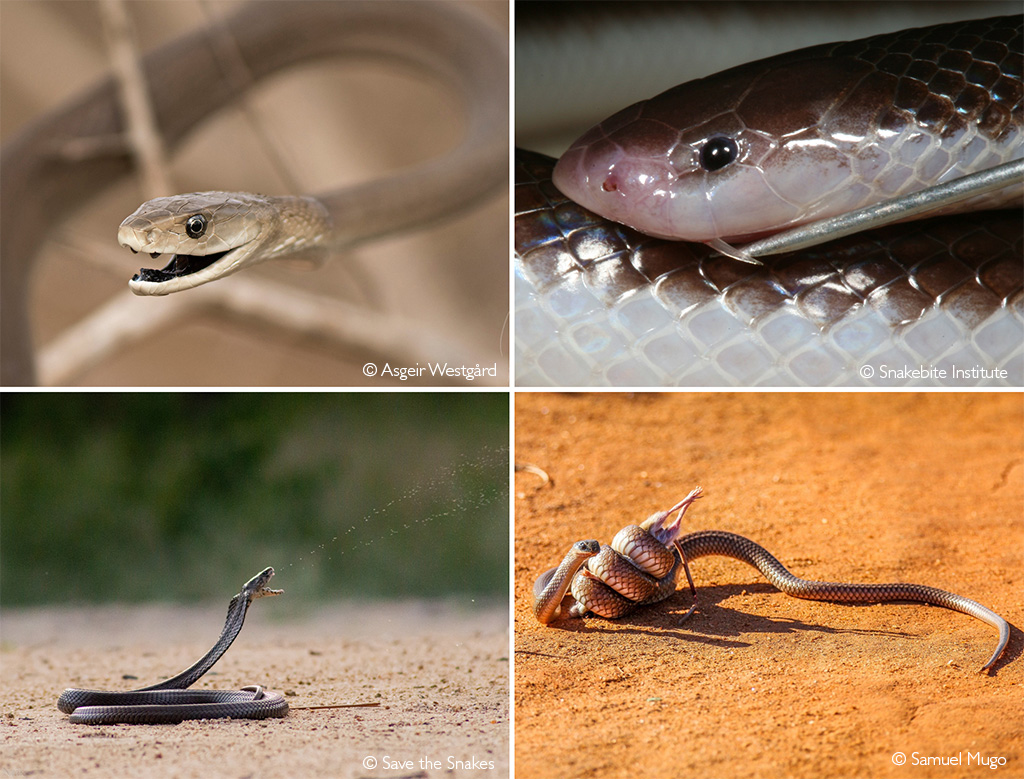
A pit of snakes
Like other members of the reptile class, most snakes lay eggs (oviparous) and are generally not thought of as contenders for Mother of the Year awards. The eggs are deposited in a suitable location, and the young inside are left to their own devices, emerging fully developed between one and two months later. However, some snake species take their maternal responsibilities more seriously and invest more energy in incubating and protecting their clutches. Python mothers will bask in the sun to warm themselves before returning to coil around the eggs to transfer heat to the eggs. She may even “shiver” to help keep the eggs warm – an extremely costly exercise that can result in the loss of over half her body weight and a two- to three-year delay between clutches.
A small number of snakes are either ovoviviparous (retaining their eggs internally until just before hatching) or even fully viviparous (giving birth to live young) with a functioning placenta. Rhinkals, certain sea snakes, most vipers and garter snakes are all examples of ovoviviparous snakes, while boa constrictors and anacondas are fully viviparous.
The young snakes use a small, sharp egg tooth on their snouts to cut their way out of the egg to emerge like perfect miniatures of the adults. In venomous species, this also means that they hatch with fully developed venom glands. As a result, a baby snake is still a potentially deadly one.
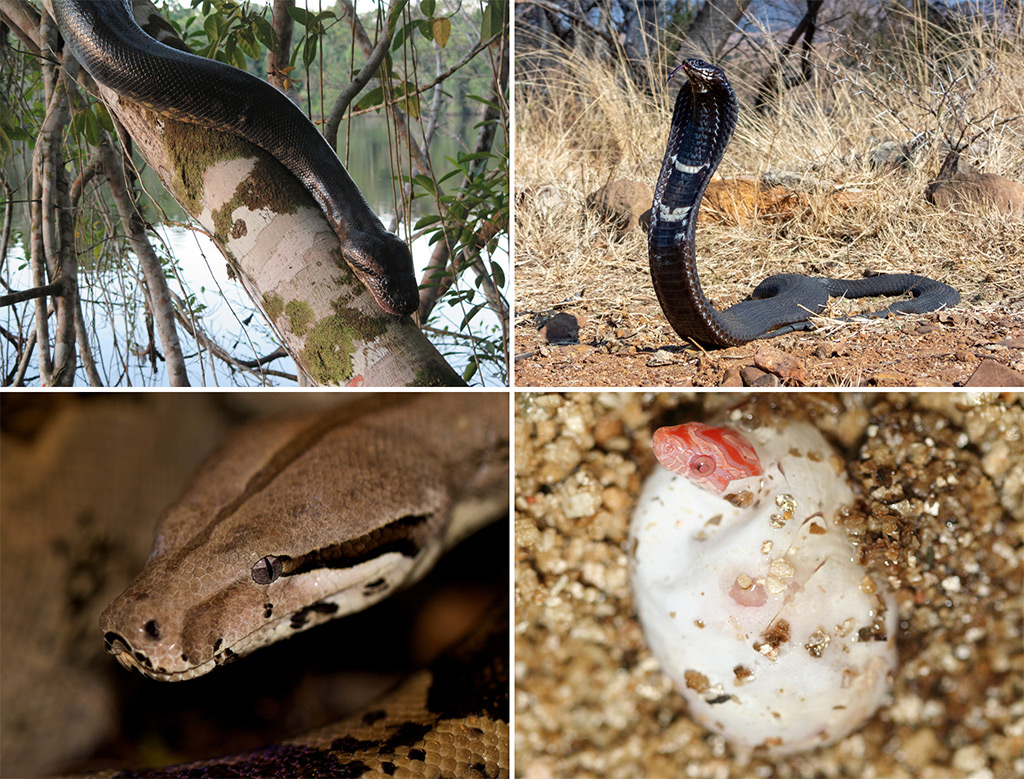
Remarkable Reptiles
While every bit deserving of respect and the same degree of caution that should be afforded to any potentially dangerous wild animal, snakes are indeed marvels of nature and should be appreciated as such. Far from the aggressive creatures they have been made out to be, they are simply complex predators adapted to survive in the form that millions of years of evolution have created for them. Note that snakes are seldom encountered on African safaris.
Resources
For more on identifying venomous snakes, read here.
For more on which snake is Africa’s deadliest, see here.
Read more on snakebites and venom here.
For more on putting right the black mamba’s reputation, see here.
For an adorable photo essay on rescued green mamba eggs hatching, see here.
To lend your support to an organisation prioritising snake conservation, read more about Save the snakes on our app. (Get the app to view – instructions below)

To comment on this story: Login (or sign up) to our app here - it's a troll-free safe place 🙂.![]()




